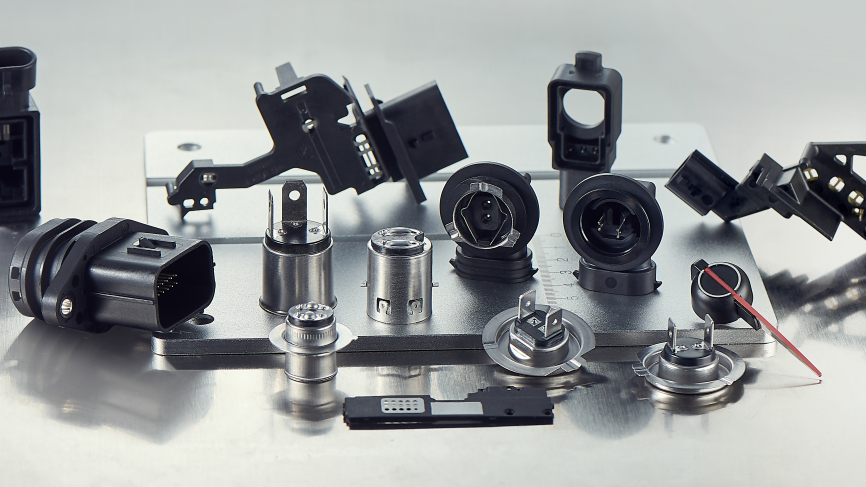Connected Infrastructure: Metal Stamping's Contribution to the Internet of Things (IoT) in Building Automation+ View more
Connected Infrastructure: Metal Stamping's Contribution to the Internet of Things (IoT) in Building Automation
+ View more
Date:2023-12-24 20:04
Introduction
In the era of the Internet of Things (IoT), metal stamping technology is playing a crucial role in building automation and creating connected infrastructure. This article explores the significant contribution of metal stamping to the IoT in building automation. By examining its impact on sensor integration, energy management, security systems, and scalability, we uncover how metal stamping is transforming buildings into intelligent, interconnected environments.

1. Sensor Integration: Enabling Real-Time Data Collection
Metal stamping enables the seamless integration of sensors into building infrastructure. With precision-formed brackets, housings, and mounting components, metal-stamped parts provide secure and accurate placement for various sensors. These sensors collect real-time data on temperature, humidity, occupancy, and other environmental factors. The precise positioning of sensors through metal stamping ensures optimal data accuracy, facilitating informed decision-making and efficient building management.
2. Energy Management: Enhancing Efficiency and Sustainability
Metal stamping contributes to energy management in building automation by optimizing efficiency and sustainability. Through the fabrication of power distribution components, such as electrical bus bars and connectors, metal stamping enables reliable and efficient energy flow throughout the building. Additionally, metal-stamped heat sinks and thermal management solutions dissipate heat effectively, enhancing the performance and lifespan of energy-consuming devices. By improving energy utilization and reducing waste, metal stamping helps create more sustainable and cost-effective building operations.
3. Security Systems: Enhancing Safety and Access Control
Metal stamping plays a vital role in the integration of security systems within smart buildings. Custom-fabricated enclosures, brackets, and locking mechanisms ensure the secure installation of access control devices, surveillance cameras, and alarm systems. These metal-stamped components provide structural integrity and tamper-resistant features, enhancing the overall safety and security of the building. Metal stamping techniques allow for intricate designs, enabling the integration of biometric sensors and other advanced security features seamlessly.
4. Scalability: Supporting Future Expansion and Adaptability
Building automation systems need to be scalable and adaptable to accommodate future expansions or changes in requirements. Metal stamping enables the production of custom components that can be easily replicated or modified as needed. These components include junction boxes, mounting brackets, and connectivity solutions. Metal-stamped parts can be precisely replicated in large quantities, ensuring consistency and compatibility across various building automation installations. The scalability provided by metal stamping ensures that buildings can adapt to evolving technologies and growing IoT capabilities seamlessly.
5. Manufacturing Efficiency: Streamlining Production Processes
Metal stamping incorporates advanced manufacturing processes that streamline the production of components for building automation systems. Progressive die stamping, high-speed stamping, and automated assembly systems enable efficient mass production of metal-stamped parts. These streamlined processes enhance productivity, reduce costs, and ensure consistent quality control throughout the entire manufacturing process. As a result, manufacturers can meet the increasing demand for components in building automation and deliver products with shorter lead times.
6. Collaboration and Innovation: Driving Smart Building Development
Collaboration among metal stamping experts, building automation specialists, and IoT technology providers drives innovation in smart building development. By leveraging their expertise, these collaborations lead to advancements in stamping techniques, material science, and design optimization. Research and development efforts focus on enhancing sensor technology, improving energy management algorithms, and integrating AI capabilities. Through ongoing collaboration and innovation, metal stamping remains instrumental in the growth and evolution of connected infrastructure and smart buildings.
Conclusion
Metal stamping's contribution to the Internet of Things (IoT) in building automation is transforming traditional buildings into intelligent, connected environments. Through its impact on sensor integration, energy management, security systems, scalability, and manufacturing efficiency, metal stamping plays a vital role in creating connected infrastructure. By facilitating real-time data collection, enhancing energy efficiency, ensuring security, and supporting scalability, metal stamping enables the development of smart buildings that are efficient, sustainable, and adaptable to future needs. As the IoT continues to expand its footprint in building automation, metal stamping will remain a driving force behind the evolution of connected infrastructure.
Share to:
Recommend wonderful blog posts

